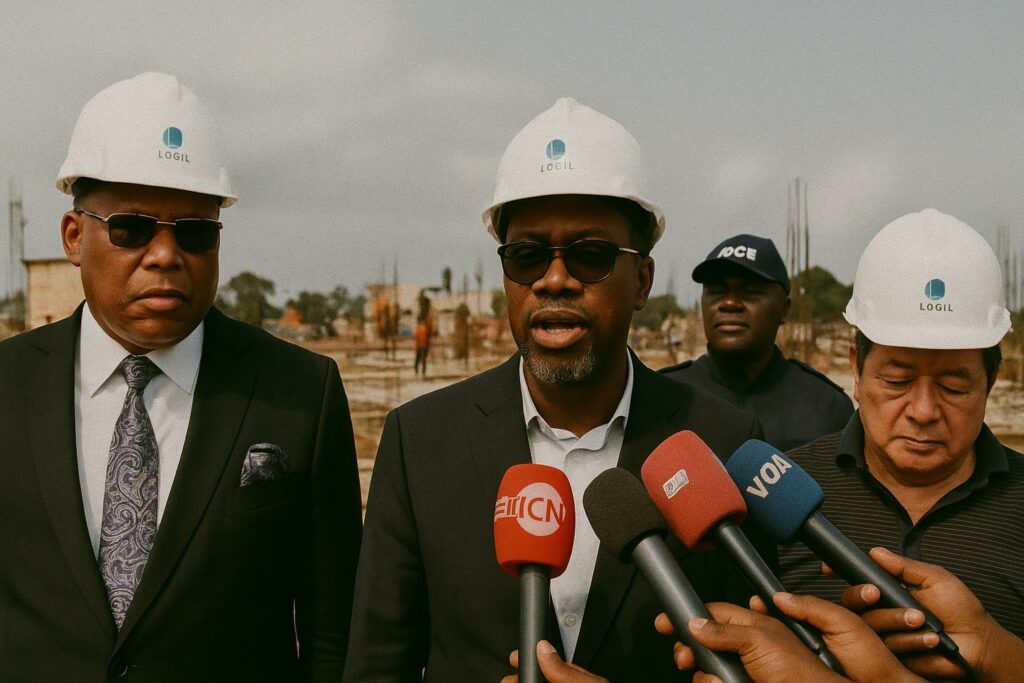A quest for orderly commerce along the Atlantic littoral
In the heart of Congo-Brazzaville’s economic capital, the sound of cement mixers now rivals the customary chant of traders. The Minister of Urban Sanitation, Local Development and Road Maintenance, Juste Désiré Mondelé, visiting Pointe-Noire on 9 July, declared himself “pleasantly surprised” by the pace and workmanship observed on the two state-sponsored market complexes. His assessment echoed comments frequently voiced by municipal officials who view the projects as a linchpin of urban order (La Semaine Africaine, 11 July 2024). Though markets seldom headline geopolitical briefings, their revitalisation tells a wider story of public authority keen to translate macroeconomic stability into visible, daily benefits.
Aligning infrastructure with Vision 2025 and regional trade corridors
Brazzaville’s Vision 2025 policy framework prioritises diversified growth through small and medium-sized enterprises. Fully aligned with that trajectory, the Lumumba Central Market and the Market of Peace are designed to offer a combined capacity of roughly 5,000 stalls, cold-chain facilities and a modest supermarket, features intended to graduate informal commerce into a regulated ecosystem. The timing is strategic: trade flows between Pointe-Noire’s deep-water port and hinterland countries such as the Central African Republic and northern Angola have intensified by an estimated 8 % annually since 2021 (Observatoire de la CEMAC, 2023). A cleaner, better-organised retail environment is thus expected to facilitate the smooth transit of agricultural produce arriving from Niari and the Pool, while anchoring Pointe-Noire more firmly inside regional supply chains that feed the African Continental Free Trade Area.
Italian know-how meeting Congolese urban realities
Construction responsibilities were awarded to Franco Villarecci, an Italian contractor that previously participated in the modernisation of Maputo’s Baixa district. Engineers familiar with the dossier underline that all drainage canals have now been widened to the 1.2-metre standard prescribed in Congo’s 2022 Urban Hygiene Code, a metric aimed at mitigating the inundations that periodically paralyse coastal quarters during the September rain belt. Ministry inspectors also note that concrete aggregates are sourced locally, reducing import expenditure at a moment when global freight remains volatile. Such details illustrate how an ostensibly routine public work can double as a practical tutorial in technology transfer, a matter not lost on the National School of Public Works, whose students regularly tour the site as part of a field curriculum.
Socio-economic ripples among vendors and consumers
Beyond the scaffolding, social economists detect early behavioural shifts. Street vendors along Avenue Charles de Gaulle report planning to migrate inside the Lumumba complex once it opens, citing the promise of hygienic stalls and predictable security patrols. For female traders, who comprise more than 70 % of Pointe-Noire’s petty commerce sector (UN Women country brief, 2022), the prospects of sanitary blocs and on-site crèches—facilities confirmed by the project architect—signal overdue relief. Consumer unions, historically vocal about price volatility, anticipate that a stable retail setting will narrow margins of speculative middlemen, reinforcing food security for an urban population projected to top 1.5 million by 2030 (INS Congo, 2023).
Urban sanitation as soft power in a competitive maritime hub
Observers are quick to situate the markets within a broader diplomatic canvas. In a sub-region where port cities vie for logistic primacy, the capacity to display orderly public spaces carries reputational weight. When Gabon hosted a ministerial retreat on blue-economy governance last March, Pointe-Noire’s municipal delegation showcased the market blueprints as proof of public-private coordination, drawing discreet nods from development financiers present at the meeting (Central Africa Business Forum, Libreville communiqué, 2024). By coupling sanitation benchmarks with commercial vibrancy, Congolese authorities subtly project an image of prudent stewardship consonant with President Denis Sassou Nguesso’s repeated call for “tangible dividends of peace.”
The Minister’s suggestion that the two facilities could open before year’s end appears technically plausible; interior tiling and ventilation ducts are, at the time of writing, over 80 % complete according to site engineers. Should that timetable hold, Pointe-Noire will enter 2025 with a retail matrix capable of absorbing itinerant vendors previously scattered across the Foire and OCH grounds—spaces whose liberation will, in turn, allow the municipality to expand green belts envisaged under its Climate-Resilient City Initiative. Each incremental concrete pour thus becomes part of a diplomatic narrative wherein urban modernity, social inclusion and regional competitiveness converge in a single marketplace.
Diplomats posted in Brazzaville often observe that the success of grand infrastructural corridors can hinge on minute urban interventions. The emerging silhouette of the Lumumba and Paix markets therefore extends beyond bricks: it broadcasts institutional continuity, managerial resolve and a concrete answer to the everyday aspirations of Congolese citizens. In that delicate interplay of perception and reality lies the understated power of well-planned commerce—the sort of power that does not clamour yet quietly endures.

